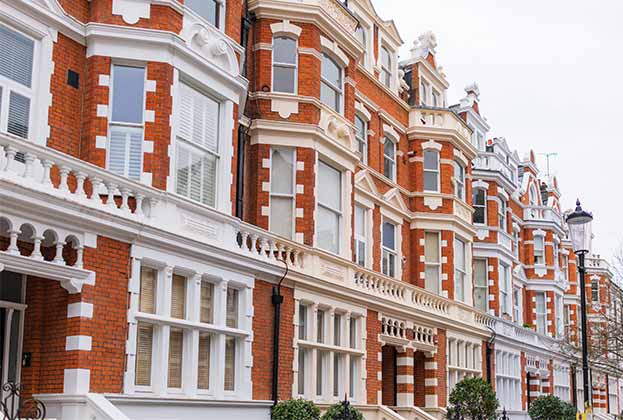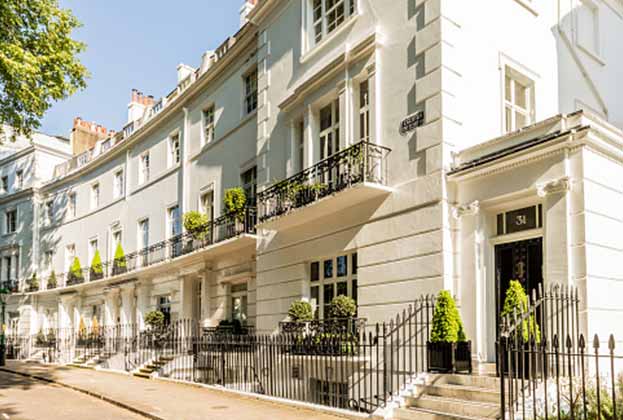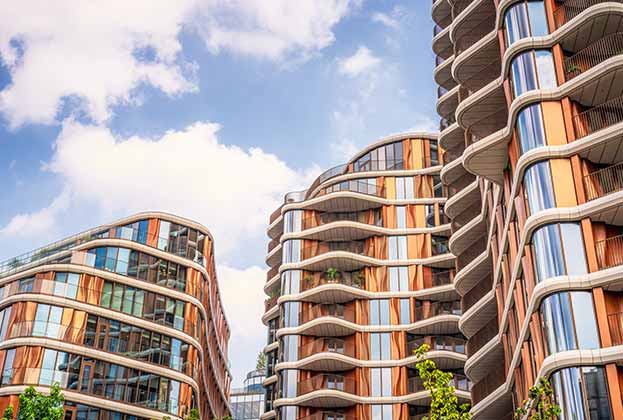How has the prime central London property market changed over the past decade and what’s in store?
Lucian Cook and Peter Bevan discuss the prime central London sales market at 60 Curzon
In June 2014, when the value of prime homes in central London hit its peak, one of Claude Monet’s Water Lilies compositions sold at auction in London for £31.7 million.
One of the 250 oil paintings depicting the flower garden at his home in Giverny, it was reportedly the second-highest price paid for his work at auction, at the time.
In November last year, a separate piece from the same series sold for $74 million in New York, equivalent to just over £60 million.
Not too long ago, that level of price appreciation was not uncommon in the prime housing markets of central London. But not so for the past decade.
A DECADE OF DISRUPTION
It is now almost ten years since George Osborne opened his red dispatch box and announced an overhaul of stamp duty, bringing with it a tax increase at the top end of the market, which prime central London could no longer absorb.
Since then, we have seen Brexit and a corresponding wave of political uncertainty. We have seen a progressive tightening of the tax net around wealthy global citizens who have chosen to make the streets of central London their primary place of residence.
We have also seen a global pandemic, increased scrutiny of buyers’ sources of wealth, a recent bout of economic turbulence, and an array of highly targeted surcharges and levies aimed at extracting more from ultra-high-net-worth individuals with a UK presence.
None of these have treated the housing markets of prime central London particularly kindly. But while it hasn’t thrived in the manner to which it had become accustomed, it has more than survived.
SURVIVAL INSTINCTS
Indeed, over the past ten years, there have been more than 4,200 sales of properties worth £5 million or more across London, totalling £46.4 billion in spend. To put this into context, that sum would have bought over 40% of all of the £1 million+ pieces of art sold at public auction around the globe over the past decade.
While the urgency to transact has ebbed and flowed, throughout this period we have consistently seen international buyers outweigh international sellers across central London.
.jpg)
REASONS FOR RESILIENCE
This continued buying activity has also reflected the fact that prime central London has looked poised for recovery many times over the past decade. And over the past five years, during which time prices have changed very little, prime central London property has looked particularly ’good value’ relative to its peers.
Indeed, our prime house price index shows that values across central London remain -19% below their 2014 peak in nominal terms, -40% below on an inflation-adjusted basis, and -39% below for a US dollar buyer.
This for a city with 16% more ultra-high net worths (those with assets of over $30 million) than its next nearest competitor in Europe, according to Altrata and Wealth-X, with Paris taking second place. And for a city which has fought hard to retain its second-place ranking behind New York as a leading global financial centre, according to Z/Yen’s long-standing index, holding off competition from pretenders to the European crown, such as Geneva and Frankfurt.
EXERCISING DISCRETION
In the art world, levels of spend fluctuate from year to year, as does which genres are in vogue.
Whereas purchases of fine art are highly discretionary, acquisitions of central London real estate are made for an array of reasons: as a main home, as a base in London, and as an investment.
Of course, there is an element of discretion as to where the ultra-high net worth community base themselves and choose to spend their time. Those decisions are typically influenced by an intricate web of cultural, climate, economic, educational, political and fiscal factors.
And, in the context of central London, it is the last of these factors – the prevailing tax environment – which weighs on the minds of a certain class of owner and potential buyer: the "non-doms", those who have residence in the UK but whose permanent home is outside of the UK.
"NON-DOMS" MANOEUVRE
In the run-up to the recent general election, their tax status became a topic of great political discussion. The Labour Party had long held well-publicised ambitions to bring them, their global earnings and global wealth, fully within the ambit of the UK tax system. But few expected the Conservative Party to bring forward the similar, if slightly more nuanced, proposals that found their way into their spring budget in early March.
And so it truly became a question of when, not if, changes would come. No surprise then, that Labour, now in power, included the abolition of "non-dom" status as a manifesto pledge.
A GAME OF WAIT-AND-SEE
Accordingly, we have found ourselves in a period where those affected have started to weigh up their options, waiting to see what comes forward in the new Chancellor of the Exchequer, Rachel Reeves’, first budget.
Given that the majority of owners and potential buyers will be unaffected by the changes, the extent to which long-time UK resident "non-doms" have already seen their tax benefits diminished and the range of other reasons to keep a foothold in central London, we have not yet seen, nor are likely to see, a flood of stock hit the market.
In the period between March and June this year, there were 15% fewer sales over £5 million across London than a year previous; an understandable reaction to the uncertainty overhanging parts of the market, and they remain well above (+38%) pre-pandemic levels. Prices, already looking good value, moved very little, easing back by less than half a percent on average.
LESSONS IN MODERN HISTORY
Of course, until we see exactly what comes forward from the new government, it is difficult to predict exactly what the future impact may be. But in terms of downside risks, it is again worth looking back at what has happened at various points over the past ten years.
In that respect, the two biggest adjustments in value were seen in the immediate aftermath of George Osborne’s reform of stamp duty (at the end of 2014) and the vote to leave the EU (in mid-2016). In the 12 months that followed those two events, prices fell back by -4.5% and -6.6%, respectively. Were the same to occur – something that is far from guaranteed – the value on offer to buyers from across the domestic and international spectrum would be compelling.
To read more of our Residential Research please visit our Residential Hub
Read the articles within In Focus: Prime Central London – Autumn 2024 below
.jpg)




